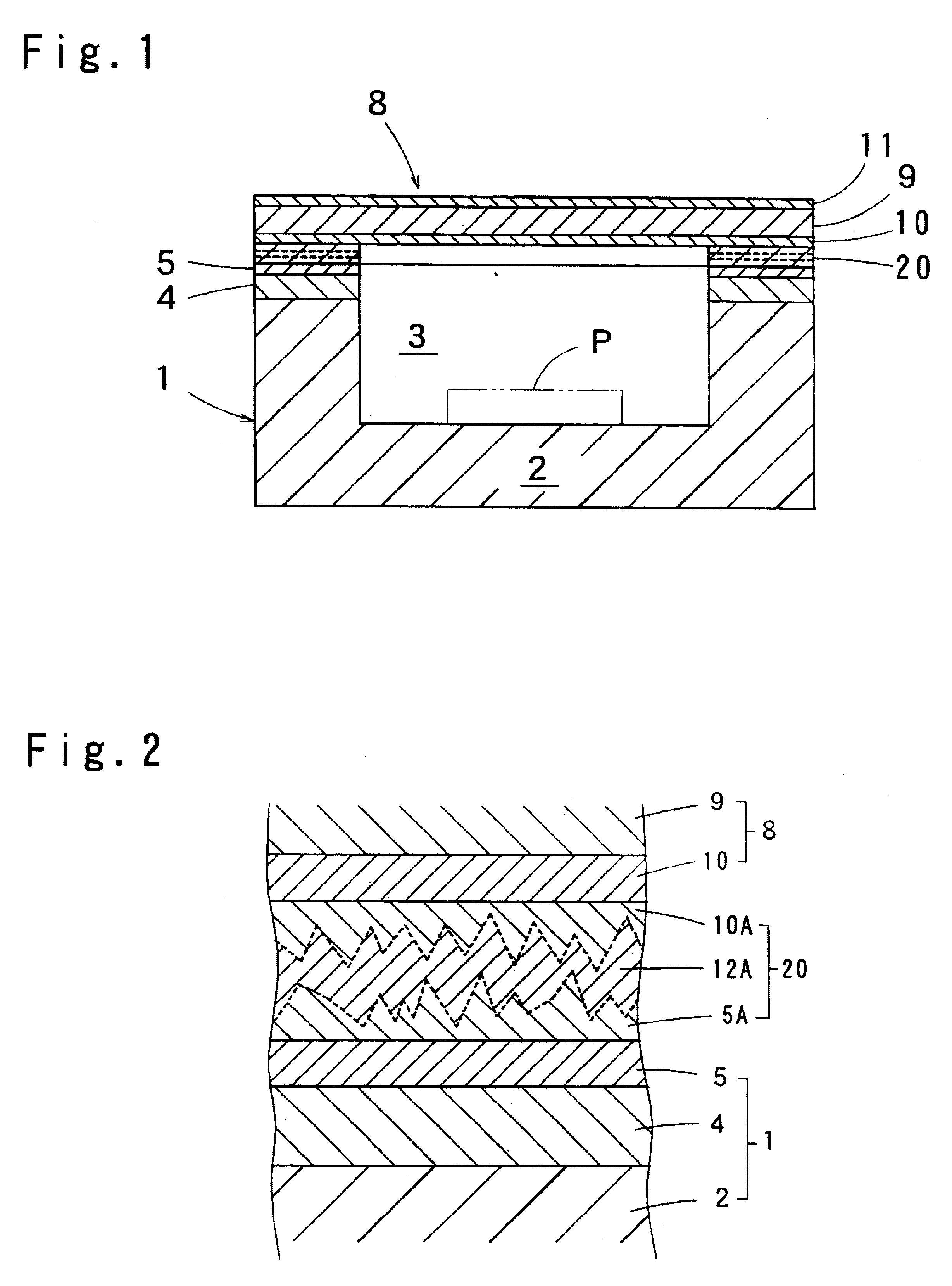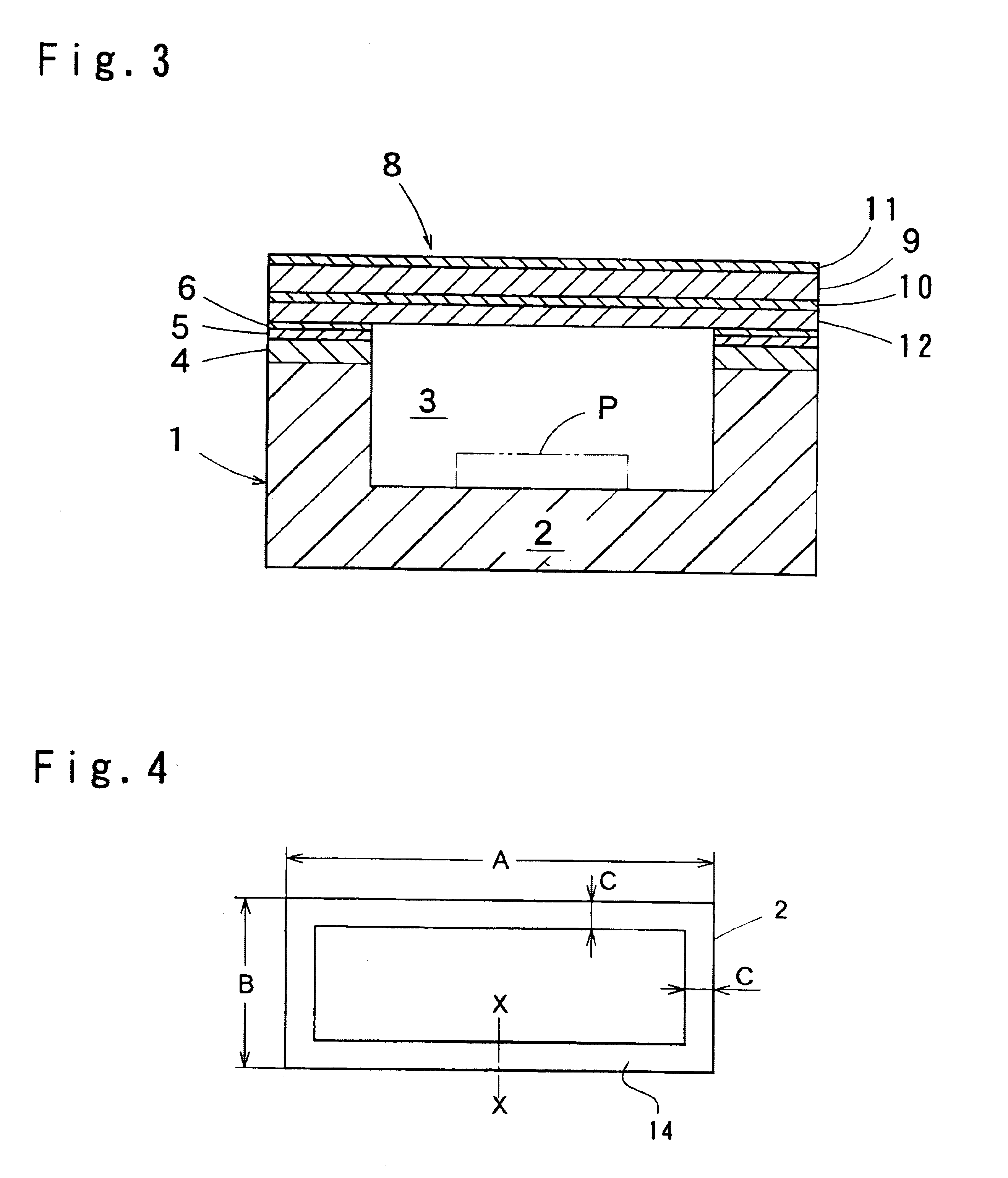Electronic component package and method of manufacturing same
a technology of electronic components and components, applied in the direction of electrical equipment, semiconductor devices, semiconductor/solid-state device details, etc., can solve the problems of reducing the peel strength of the fusion-welding layer, reducing and easy formation of pinholes, so as to prevent the change of fusion welding and suppress the formation of voids in the intermetallic compound during fusion welding. , the effect of improving the stability of the fusion welding
- Summary
- Abstract
- Description
- Claims
- Application Information
AI Technical Summary
Benefits of technology
Problems solved by technology
Method used
Image
Examples
Embodiment Construction
[0041] Cases were provided each having a W metallized layer (thickness: 30 .mu.m), an Ni layer (thickness: 15 .mu.m) and an Au layer (thickness: 1 .mu.m), which had been stacked in that order on a peripheral edge surface of a case body formed of a ceramic at the cavity open side, the peripheral edge surface surrounding the opening of a cavity defined in the case body. Lid members, which were separately provided, were each superposed on the Au layer side of each case via a soldering material to give package assemblies. As shown in FIG. 4, each case was sized in top plan as follows: length A=4.1 mm, overall width B=2.6 mm, and width C=0.35 mm, width C which is the width of peripheral edge surface 14 on the cavity open side from the outer periphery of the case to the inner periphery of the cavity portion. The planar size of each lid member was substantially equal to that of each case.
[0042] Each lid member had been manufactured through a process including: pressure-welding an Ni sheet ...
PUM
 Login to View More
Login to View More Abstract
Description
Claims
Application Information
 Login to View More
Login to View More - R&D
- Intellectual Property
- Life Sciences
- Materials
- Tech Scout
- Unparalleled Data Quality
- Higher Quality Content
- 60% Fewer Hallucinations
Browse by: Latest US Patents, China's latest patents, Technical Efficacy Thesaurus, Application Domain, Technology Topic, Popular Technical Reports.
© 2025 PatSnap. All rights reserved.Legal|Privacy policy|Modern Slavery Act Transparency Statement|Sitemap|About US| Contact US: help@patsnap.com


